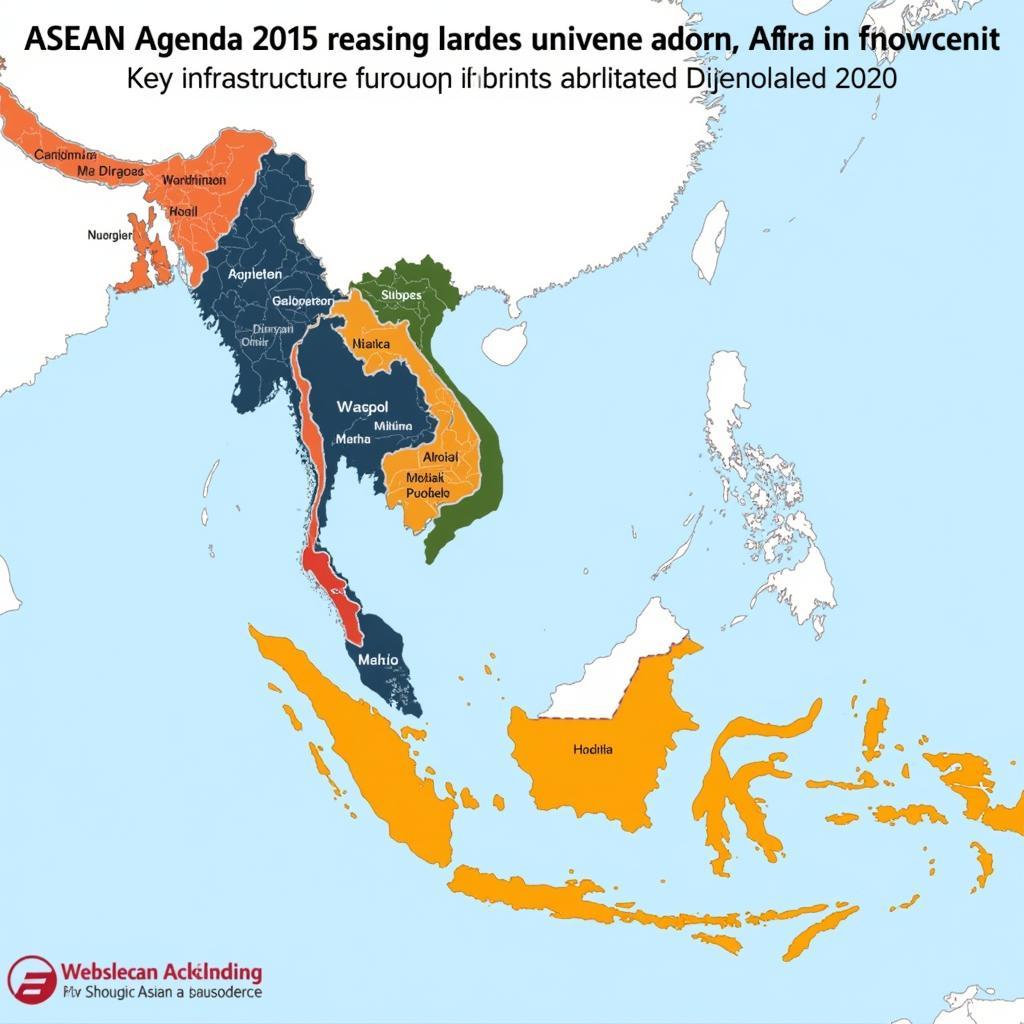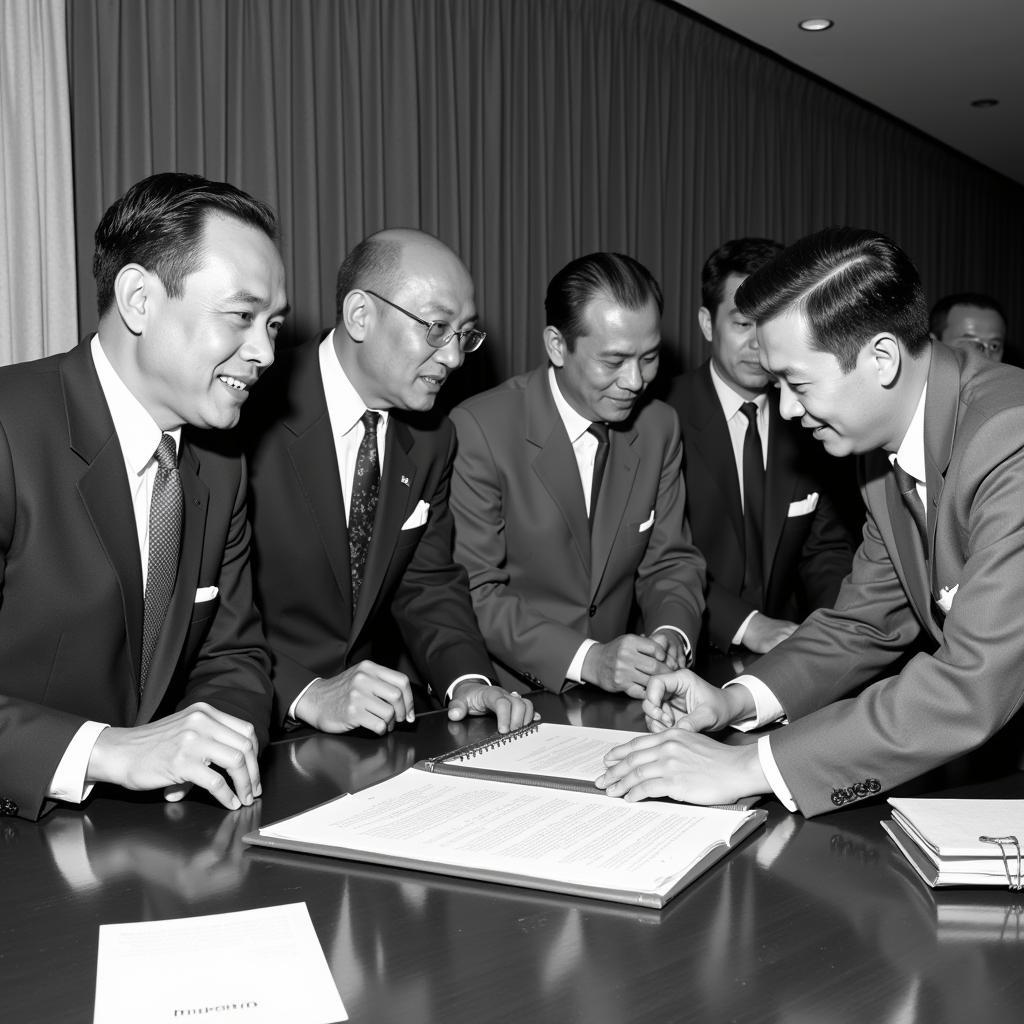The Asean Agenda 2015 marked a critical juncture in the journey towards regional integration. This ambitious agenda centered around the establishment of the ASEAN Economic Community (AEC), a milestone envisioned to transform Southeast Asia into a single market and production base. achieving-the-asean-economic-community-2015-pdf The ASEAN Agenda 2015, with its focus on economic cooperation, aimed to bolster competitiveness, reduce poverty, and enhance the region’s global standing.
The Four Pillars of the ASEAN Economic Community (AEC)
The AEC, the cornerstone of the ASEAN Agenda 2015, rested upon four fundamental pillars: a single market and production base, a competitive economic region, a region of equitable economic development, and a region fully integrated into the global economy. These pillars were designed to work synergistically, promoting growth and prosperity across ASEAN member states.
Single Market and Production Base
This pillar focused on enabling the free flow of goods, services, investment, skilled labor, and capital within the ASEAN region. Removing barriers to trade and investment was paramount to creating a truly integrated market.
Competitive Economic Region
The ASEAN Agenda 2015 recognized the importance of fostering a competitive environment. This involved promoting competition policy, consumer protection, intellectual property rights, and developing infrastructure.
Equitable Economic Development
The agenda also emphasized inclusive growth and reducing development gaps within ASEAN. Initiatives focused on supporting small and medium enterprises (SMEs), developing less developed member states, and promoting equitable access to opportunities.
Integration into the Global Economy
The ASEAN Agenda 2015 sought to strengthen ASEAN’s position in the global economy. This involved enhancing regional economic cooperation, negotiating free trade agreements, and actively participating in international economic forums.
Key Initiatives under the ASEAN Agenda 2015
Several key initiatives were undertaken to realize the vision of the AEC. These included streamlining customs procedures, harmonizing standards, and promoting investment liberalization. These efforts aimed to create a more seamless and integrated economic landscape.
What were the aims of the ASEAN Agenda 2015?
The primary aim was to establish the AEC by the end of 2015. This involved achieving significant progress across all four pillars of the AEC.
asean 2 The Agenda also aimed to enhance ASEAN’s connectivity, both physically and digitally, to facilitate trade and investment.
How did the ASEAN Agenda 2015 impact the region?
The ASEAN Agenda 2015 significantly impacted Southeast Asia by fostering greater economic integration and cooperation. It led to increased trade and investment flows, improved infrastructure, and enhanced regional competitiveness.
 Impact of the ASEAN Agenda 2015
Impact of the ASEAN Agenda 2015
Challenges and Opportunities
While the ASEAN Agenda 2015 achieved significant milestones, challenges remained. These included narrowing the development gap between member states, addressing non-tariff barriers, and enhancing regional institutional capacity.
“The ASEAN Agenda 2015 was a pivotal moment for the region, laying the foundation for deeper economic integration and shared prosperity,” says Dr. Anya Sharma, a leading economist specializing in Southeast Asian affairs.
agenda-of-asean The agenda also presented numerous opportunities for businesses, investors, and individuals, creating a larger market, increasing competition, and fostering innovation.
Conclusion
The ASEAN Agenda 2015 represented a significant step forward in ASEAN’s journey towards regional integration. While challenges persist, the progress made towards establishing the AEC laid the groundwork for future growth and development. The ASEAN Agenda 2015 reaffirmed the region’s commitment to economic cooperation and its aspiration for a more integrated and prosperous Southeast Asia.
“The key to realizing the full potential of the ASEAN Agenda 2015 lies in continued collaboration and a shared commitment to regional integration,” adds Professor Kenji Tanaka, an expert in international trade and regional development.
asean 2015 agenda in science and technology The ASEAN Agenda 2015 continues to shape the region’s economic landscape, creating a more dynamic and interconnected Southeast Asia.
Need support? Contact us 24/7 at Phone: 0369020373, Email: [email protected] or visit us at Thon Ngoc Lien, Hiep Hoa, Bac Giang, Vietnam.
